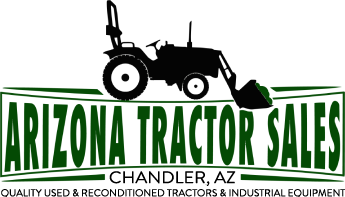The Drawbacks of Buying New Tractors, Skid Steers, Backhoes, and Other Equipment from New Tractor Dealerships
While purchasing new tractors, skid steers, backhoes, and other heavy equipment from new tractor dealerships can be appealing due to the allure of the latest models and technologies, there are significant drawbacks to consider. Here’s an in-depth look at the negatives associated with buying new equipment from dealerships and why it might not always be the best choice for farmers, contractors, and businesses.
High Initial Costs
The most immediate and noticeable drawback of purchasing new equipment is the high initial cost. New machinery comes with a premium price tag that can be prohibitive for many buyers.
- Substantial Investment: New tractors and skid steers require a significant upfront investment, which can strain the finances of small businesses or individual operators.
- Depreciation: New equipment depreciates quickly. The moment it leaves the dealership, its value starts to decline, often by as much as 20-30% in the first year.
Financing Challenges
Financing new equipment can be challenging and expensive. The high cost of new machinery often necessitates loans or financing plans, which come with their own set of issues.
- High Interest Rates: Financing new equipment can lead to higher interest rates compared to used equipment loans, increasing the overall cost.
- Long-Term Debt: Taking on significant debt to purchase new machinery can affect your financial stability and limit future investment opportunities.
Increased Insurance and Maintenance Costs
New equipment typically requires higher insurance premiums to protect against potential loss, adding to the ongoing expenses.
- Higher Insurance Premiums: The cost to insure new machinery is higher, reflecting the increased value of the equipment.
- Costly Repairs and Maintenance: While new equipment may initially come with a warranty, maintenance and repair costs can still be high. Specialized parts and services for new models are often more expensive than for older, more common machinery.
Limited Immediate Availability
Buying new equipment often involves waiting times that can disrupt your operations.
- Delivery Delays: New equipment might not be immediately available, leading to delays in getting the machinery to your site.
- Customization Wait Times: Custom orders for new equipment can extend the waiting period, delaying project timelines.
Technology Overload
New models often come with advanced technology and features that, while beneficial, can also present challenges.
- Complexity: The latest technological advancements can make new equipment more complex to operate and maintain. This can require additional training for operators and mechanics.
- Overkill: Many new features may not be necessary for all users, leading to paying for capabilities that are not fully utilized.
Lower Resale Value
The rapid depreciation of new equipment impacts its resale value. If you need to sell the equipment in the future, you might not recoup as much of your initial investment as you would hope.
- Depreciation Impact: As mentioned earlier, new equipment loses value quickly, affecting the resale price.
- Market Saturation: The availability of newer models can make selling your used new-model equipment more challenging, as buyers may prefer to purchase directly from the dealership.
Environmental Considerations
The production of new equipment has a significant environmental impact, from the extraction of raw materials to the manufacturing process.
- Resource Intensive: Manufacturing new tractors, skid steers, and backhoes require substantial resources, contributing to environmental degradation.
- Carbon Footprint: The carbon footprint of producing new machinery is considerable, making used equipment a more environmentally friendly choice.
Conclusion
While new equipment from dealerships offers the latest technology and the appeal of a fresh start, the high costs, rapid depreciation, and added expenses make it a less attractive option for many buyers. The financial strain, complex technology, and environmental impact are significant drawbacks that must be carefully considered.
For those looking to balance cost and functionality, exploring used equipment from reputable dealers can be a smarter choice. With lower upfront costs, less depreciation, and the availability of reliable, high-quality machinery, used equipment often provides a more practical and financially sound solution for meeting your operational needs. Whether you're in farming, construction, or landscaping, the benefits of used tractors, skid steers, backhoes, and other machinery can far outweigh the allure of brand-new equipment.

